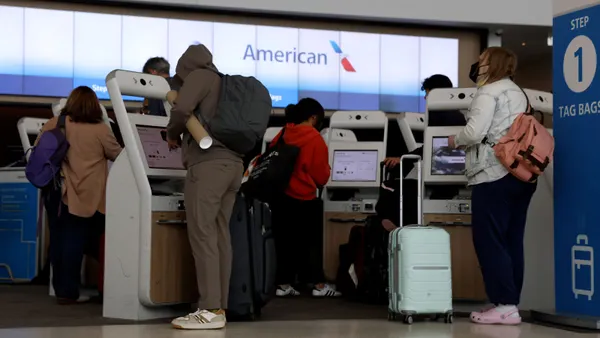When Virginia Suliman became EVP and CIO at rental property management company Invitation Homes in November, her first priority was simple: listen.
Previously at Hilton Worldwide, understanding the industry and where Invitation Homes stood from a tech perspective were clear initial goals as Suliman settled into the role. The next step was charting a multiyear strategy to improve the company's technology position.
Then, on Friday, March 13, right as the CIO was in her office going over the company's revamped tech strategy, company leadership decided it would pivot to remote work. It was time to shift gears.
"In a matter of four hours the CIO role changed very quickly," Suliman told CIO Dive. The task at hand shifted from long-term strategy to firefighting as the company's staff went remote.
"Some of our software development investments that we're looking to make, around both our digital assets and our internal tool sets, we just slowed it."

Virginia Suliman
EVP, CIO at Invitation Homes
The response phase, in which CIOs helped support the transition to distributed work is over. Now CIOs are grappling with realigned timelines and altered budget priorities in the midst of the pandemic. Original plans went back to the drawing board.
In Suliman's case, the pivot called for delaying data analytics work, balancing the bandwidth of technical talent as the team dealt with more pressing projects related to COVID-19 response.
"Some of our software development investments that we're looking to make, around both our digital assets and our internal tool sets, we just slowed it," Suliman said.
Responding to industry tides
Industry context is essential for companies reassessing tech goals. For the hard-hit airline industry, changes are far more fundamental than a software firm that transitioned smoothly to remote operations.
A company's stance following the crisis can be grouped into three categories, according to Monika Sinha, research vice president at Gartner:
- Reduce: In industries with significantly impacted operations, such as entertainment and travel, are now looking to reduce products and services, locations or footprint. The priority is to stay afloat, leveraging technology to offset costs.
- Return: After dealing with the direct impact of the pandemic, CIOs in this group of companies will be returning to the priorities they set at the end of last year and looking to identify new areas of investment. For example, retail may double down on technology powering omnichannel capabilities.
- Rescale: Companies who saw demand spike during the pandemic, such as those powering remote work tools, are looking to capture market share and continue to drive their growth curve upwards. As a result, they're actually pumping more resources into their technology stack.
"In all of these three buckets, investment in technology is still very important and top of mind," Sinha said. "CEOs still see tech investments is how they're going to solve the business problem they're facing, regardless of which category they might fall into."
In choosing which technology plays to focus on, the key criteria will be prioritizing and delivering the capabilities that can produce the best business outcomes.
Halting all mid- to long-term tech initiatives might let some CIOs reap immediate benefits, said Suliman. But once the crisis subsides, those companies could struggle to recover.
Drawing board or chopping block?
With CIOs reassessing mid- and long-term priorities in the wake of COVID-19, the global IT spending numbers are likely to take a hit.
IT budgets are expected to dip 8% in 2020 when compared to 2019, according to Gartner projections. It's a stark contrast to the 3.7% year-over-year growth rate for 2020 the firm had predicted in January.
When it comes to tech spend, growth is a motivator for 32% of finance chiefs, according to PwC's COVID-19 Pulse Survey. Conversely, one in five CFOs sees technology spend as a pathway to cost reduction.
"Don't throw things away mid course, just slow them down. Don't burn the resources, just ease the pedal a little bit."

Shivkumar Gopalan
CIO at Unit4
In striking a balance, leaders must weigh whether there's benefit in scrapping initiatives already underway, said Shivkumar Gopalan, CIO at software company Unit4, in an interview with CIO Dive.
The outcome of the analysis may look a lot different for businesses across sectors, depending on the level of impact they've had to withstand. It's contingent upon the CIO to make the broader tech strategy align with business priorities, but make adjustments as the business context changes.
"Don't throw things away mid course, just slow them down," said Gopalan. "Don't burn the resources, just ease the pedal a little bit."
At Invitation Homes, leadership dove into assessing where technology investments would deliver the most value, but continued to let business goals determine how to prioritize efforts.
"We were able to maintain a level of consistency with the strategy we had, without deviating significantly, by just making some subtle adjustments," Suliman said. "We're in a fortunate position to be able to make these decisions. Other industries had to make more difficult decisions based on what they were working on."















